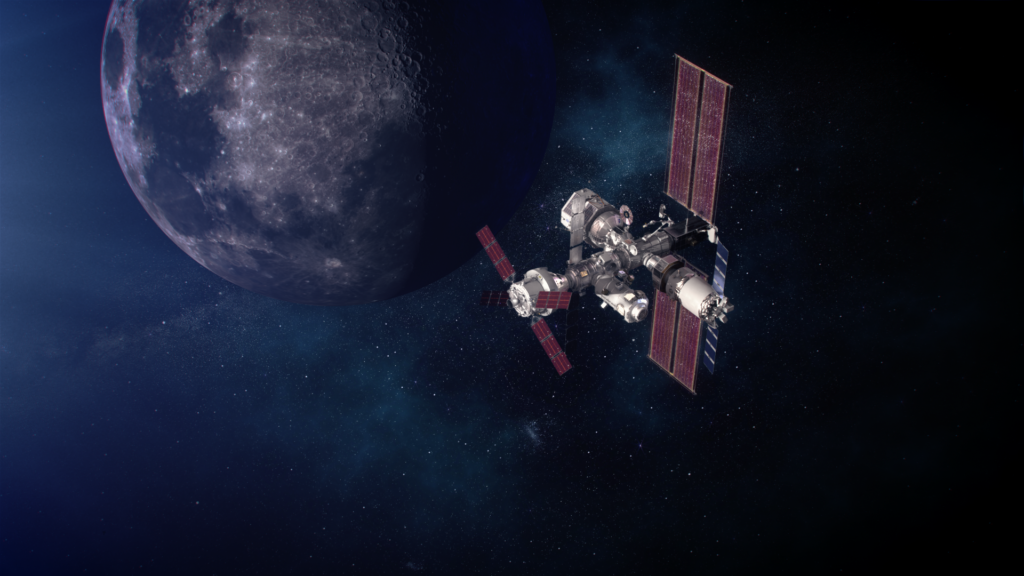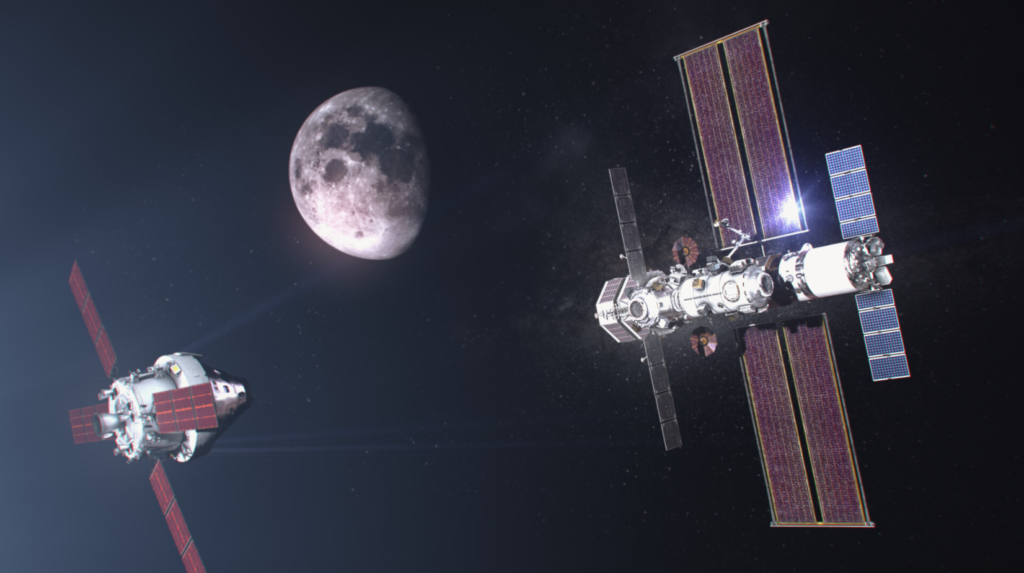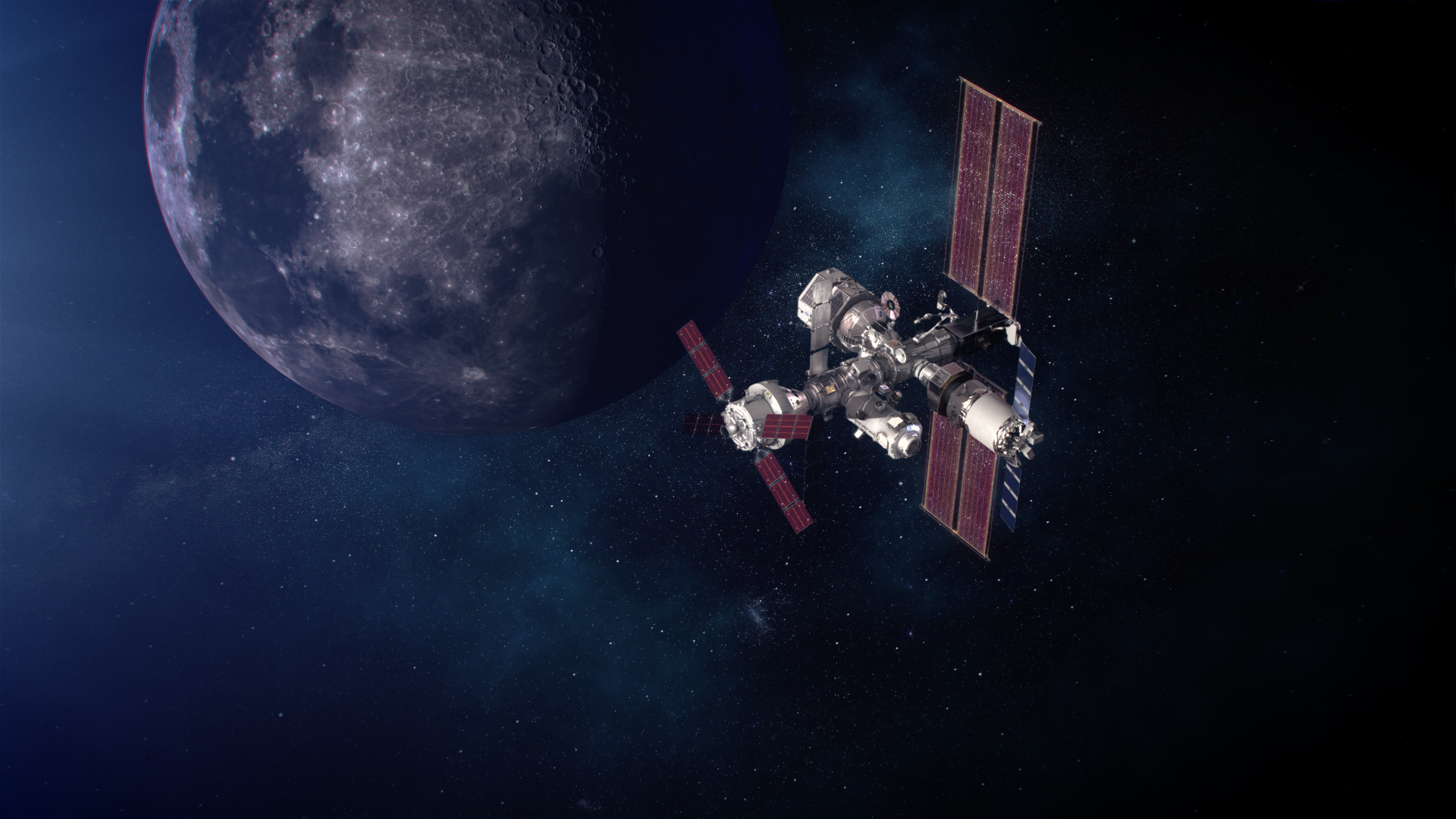
The Future Lunar Space Station’s Key Features
It has been around 50 years since the last human stepped foot on the Moon. The Apollo missions were incredible feats of technology, engineering, and much more. Now in 2022, NASA is working hard to get back to the Moon. One of the big differences however is this time NASA plans to set up a base and a more permanent human presence. This even includes constructing a lunar space station.
As part of the Artemis missions starting in 2024, NASA intends to construct a space station that orbits the Moon named Gateway. Gateway is a necessary piece of infrastructure meant to provide a strong communication relay, allow multiple human missions at one time, facilitate additional Moon access, and much more. All of which are vital for trying to not only land on the Moon, but set up a more permanent human presence.
The Moon is an extremely desolate and dangerous place. Not to mention its distance from Earth among other complications. These reasons and many others mean key parts of the Artemis mission including Gateway are crucial for the success of the Mission. Artemis is meant to be a long-term mission on the Moon prior to going to Mars. Gateway plays a vital role in the future of humans on the Moon.
Gateway Features

The Gateway will be an outpost orbiting the Moon that provides vital support for a long-term human return to the lunar surface, as well as a staging point for deep space exploration. It is a critical component of NASA’s Artemis program. The Gateway is a vital part of NASA’s deep space exploration plans, along with the Space Launch System (SLS) rocket, Orion spacecraft, and human landing system that will send astronauts to the Moon. Gaining new experiences on and around the Moon will prepare NASA to send the first humans to Mars in the coming years, and the Gateway will play a vital role in this process. It is a destination for astronaut expeditions and science investigations, as well as a port for deep space transportation such as landers en route to the lunar surface or spacecraft embarking to destinations beyond the Moon. NASA has focused Gateway development on the initial critical elements required to support the landing. This includes the Power and Propulsion Element, the Habitation and Logistics Outpost (HALO), and logistics capabilities. Here I will go more in-depth into some of Gateway’s specific features. Starting with the Power and Propulsion Element. The Power and Propulsion Element (PPE) is a high-power, 60-kilowatt solar electric propulsion spacecraft that will provide power, high-rate communications, attitude control, and orbital transfer capabilities for the Gateway. In May 2019, NASA selected Maxar Technologies of Westminster, Colorado, to develop, build, and support an in-space demonstration of the element. In addition, the PPE is managed out of NASA’s Glenn Research Center in Ohio. The PPE is intended to have a mass of 8–9 tons and the capability to generate 50 kW of solar electric power using Roll Out Solar Arrays for its Hall-effect thrusters, which can be supplemented by chemical propulsion. NASA is hoping to begin launching elements in November 2024 along with the HALO module.
The HALO module stands for Habitation and Logistics Outpost. This outpost will be the initial crew cabin for astronauts visiting the Gateway. Its primary purpose is to provide basic life support needs for the visiting astronauts after they arrive in the Orion and prepare for their trip to the lunar surface. It will provide command, control, and data handling capabilities, energy storage and power distribution, thermal control, communications and tracking capabilities, as well as environmental control and life support systems to augment the Orion spacecraft and support crew members. It also will have several docking ports for visiting vehicles and future modules, as well as space for science and stowage. The HALO is being developed by Northrop Grumman and is managed out of NASA’s Johnson Space Center in Houston. This contract is valued at $935 million. Under the contract, Northrop Grumman will be responsible for attaching and testing the integrated HALO with the Power and Propulsion Element (PPE), being built by Maxar Technologies. Northrop Grumman will also lead the integrated PPE and HALO spacecraft turnover and launch preparation with SpaceX, and support activation and checkout of HALO during the flight to lunar orbit. NASA is targeting November 2024 to launch the integrated spacecraft on a SpaceX Falcon Heavy rocket.
Another key component of Gateway has to do with deep space logistics. As astronauts prepare for missions to the lunar surface, they will need deliveries of critical pressurized and unpressurized cargo, science experiments, and supplies, such as sample collection materials and other items. In March 2020, NASA announced SpaceX as the first U.S. commercial provider under the Gateway Logistics Services contract to deliver cargo and other supplies to the Gateway. One logistics services delivery is anticipated for each crewed Artemis mission to the Gateway. Gateway Logistics is based at NASA’s Kennedy Space Center in Florida. In February 2021, NASA selected SpaceX to provide launch services for PPE and HALO. After integration on Earth, the PPE and HALO are targeted to launch together no earlier than November 2024 on a Falcon Heavy rocket from Launch Complex 39A at Kennedy. These initial missions and pre-staging of the necessary equipment are very important for the future of practically all Artemis missions. While NASA plays a very big role in the future of Gateway, they are not alone in the development and construction of the lunar space station. Gateway international partners will provide important contributions to the lunar outpost, comprising advanced external robotics, additional habitation, refueling capability, and possibly other enhancements. Canada announced in February 2019 its intention to participate in the Gateway and contribute advanced external robotics. In December 2020, the Canadian Space Agency awarded a contract to MDA to build the Canadarm3 for Artemis deep space missions. In October 2019, Japan announced plans to join the United States on the Gateway with contributions of habitation components and logistics resupply. In November 2019, the European Space Agency (ESA) received authorization and funding to support its contributions to the Gateway including habitation and refueling. In October 2020, ESA signed an agreement with NASA to contribute habitation and refueling modules and enhanced lunar communications to the Gateway. ESA also provides two additional European Service Modules for NASA’s Orion spacecraft. In November 2020, Canada signed a Gateway agreement to contribute external robotics and in December 2020, Japan signed an agreement to partner with NASA on the Gateway as well. Gateway is an extremely ambitious and never before done plan for the future of the Moon. Similar to the International Space Station, the help and cooperation of different agencies around the world will play a vital role in its future success.
Conclusion
While it has been many years since the last time a human stepped foot on the Moon, this is set to change very soon. Initial Artemis missions are planned to begin in 2024 where NASA along with other agencies will work to not only return humans, but create a more permanent human presence. One of the vital pieces of infrastructure in this process includes Gateway. Key aspects of this lunar space station are already being developed including the Power and Propulsion Element, HALO, general logistics, and much more. These features are intended to facilitate the future of humans on the Moon and help prepare us for missions to Mars and beyond. We will have to wait and see what NASA along with other agencies can create, and the impact it has on the space industry.
